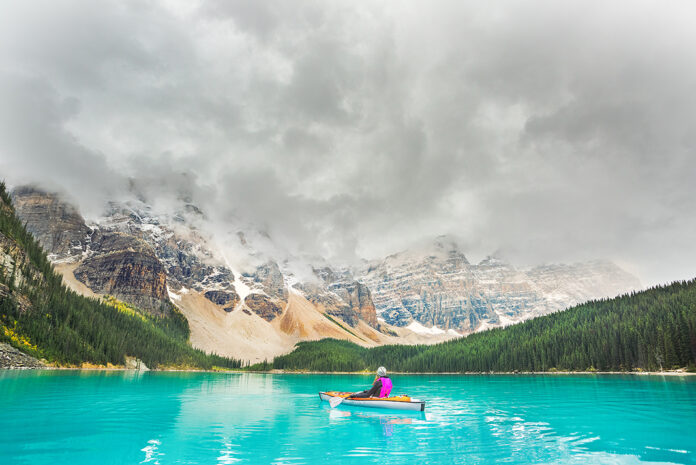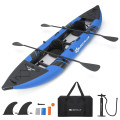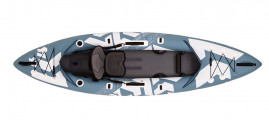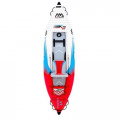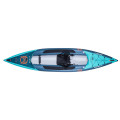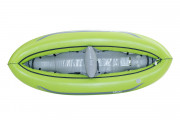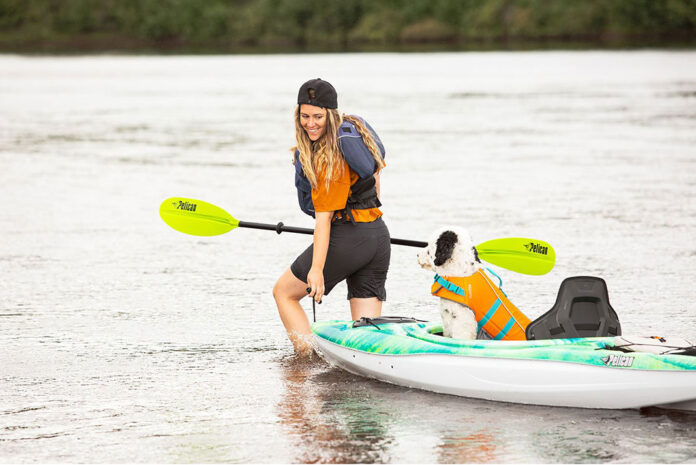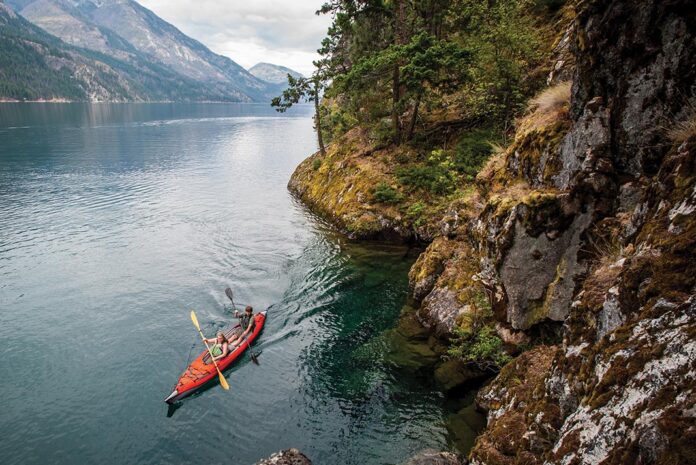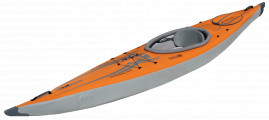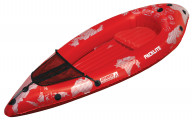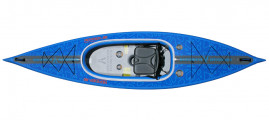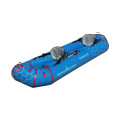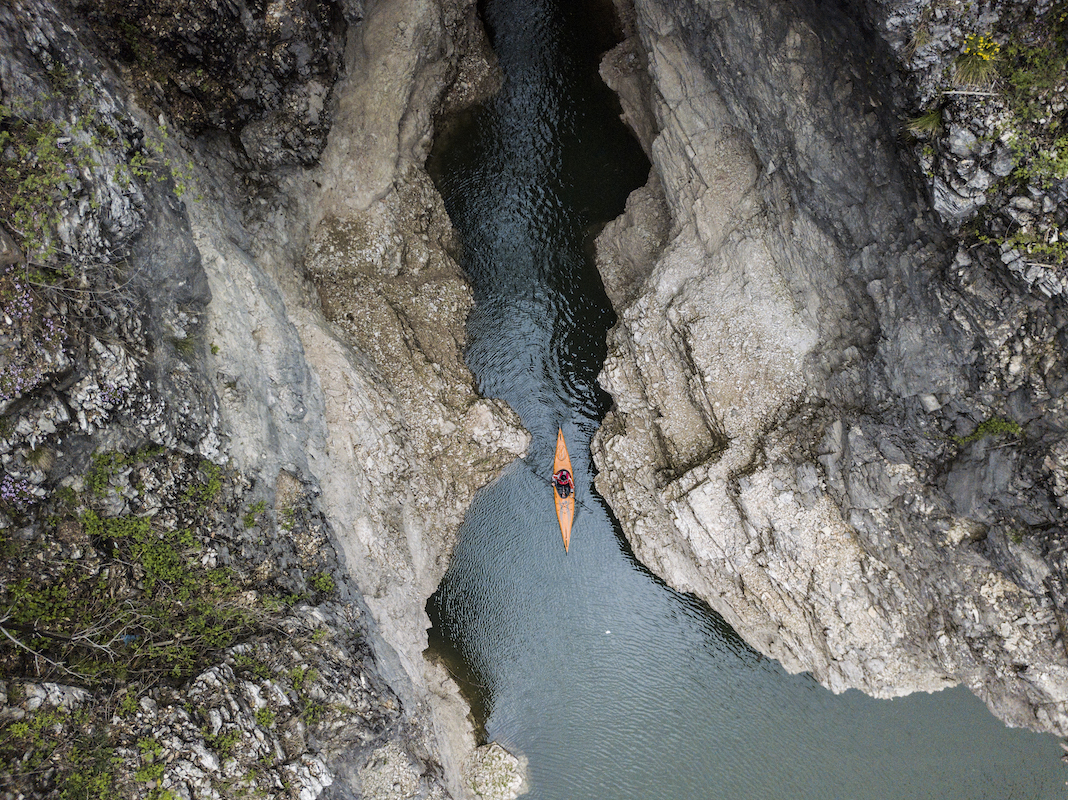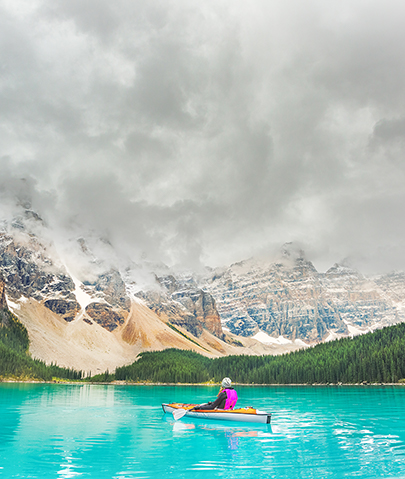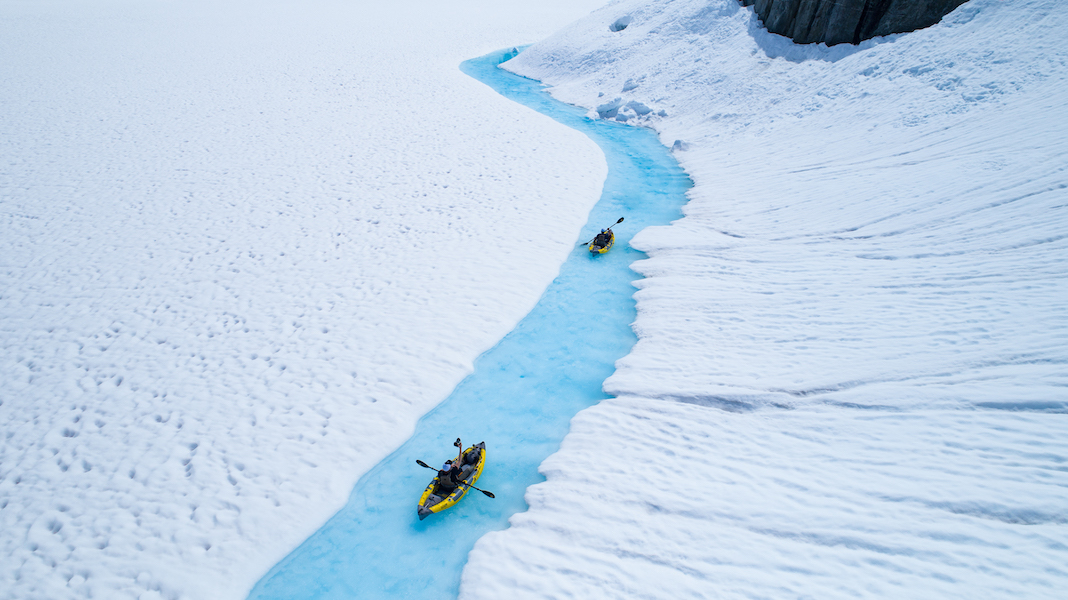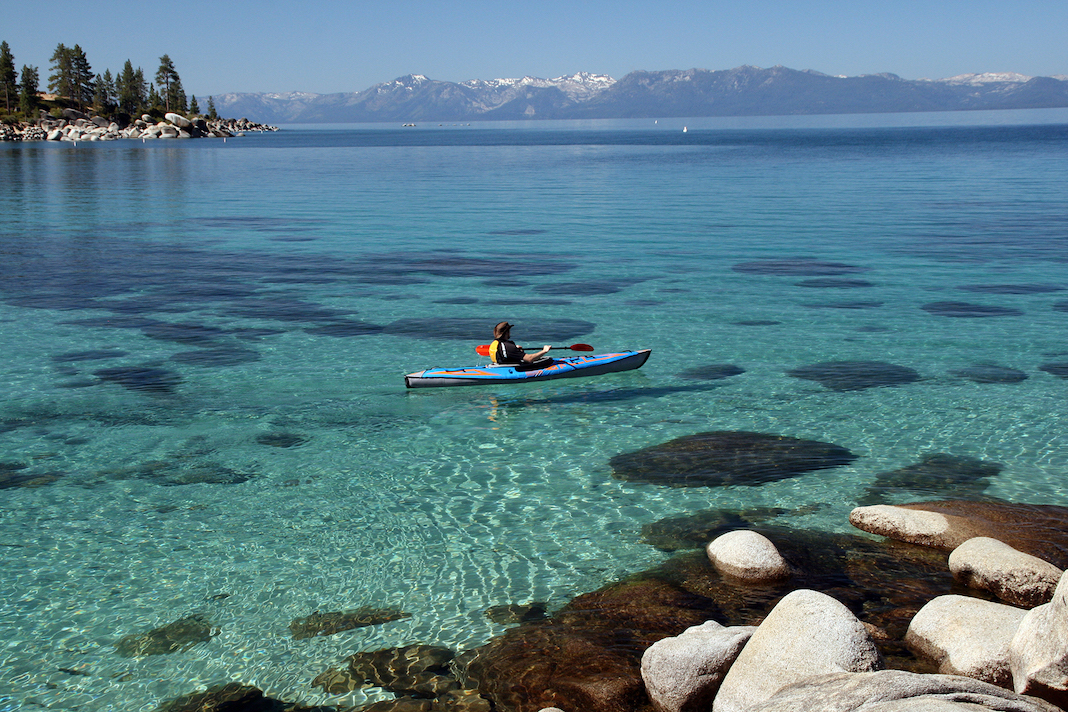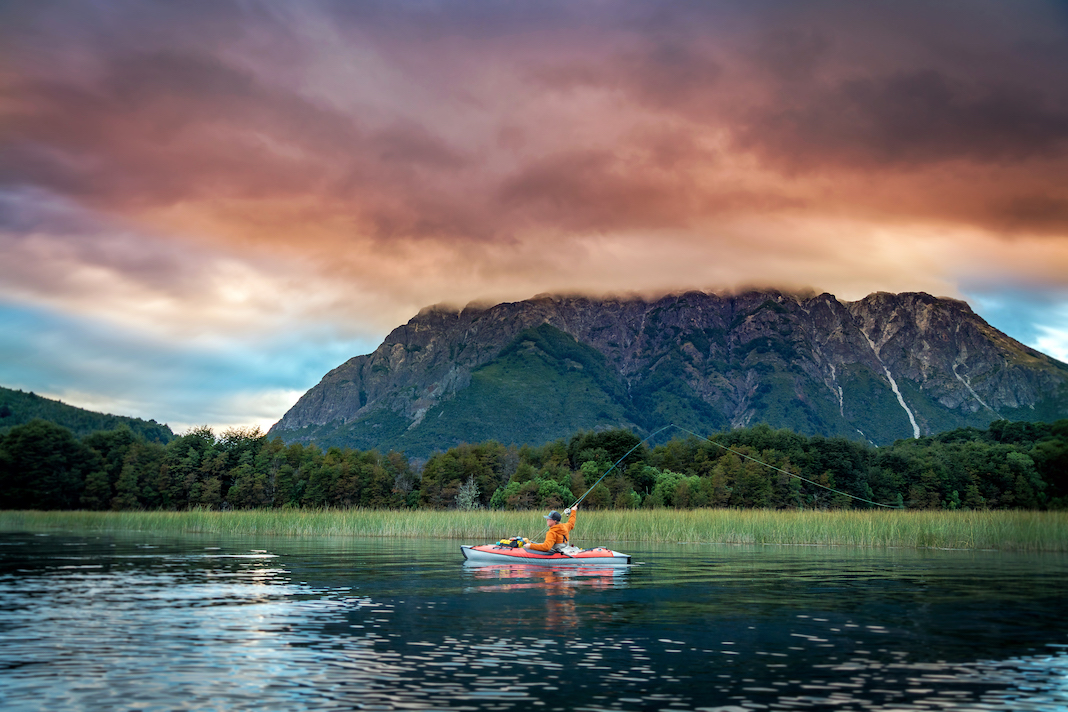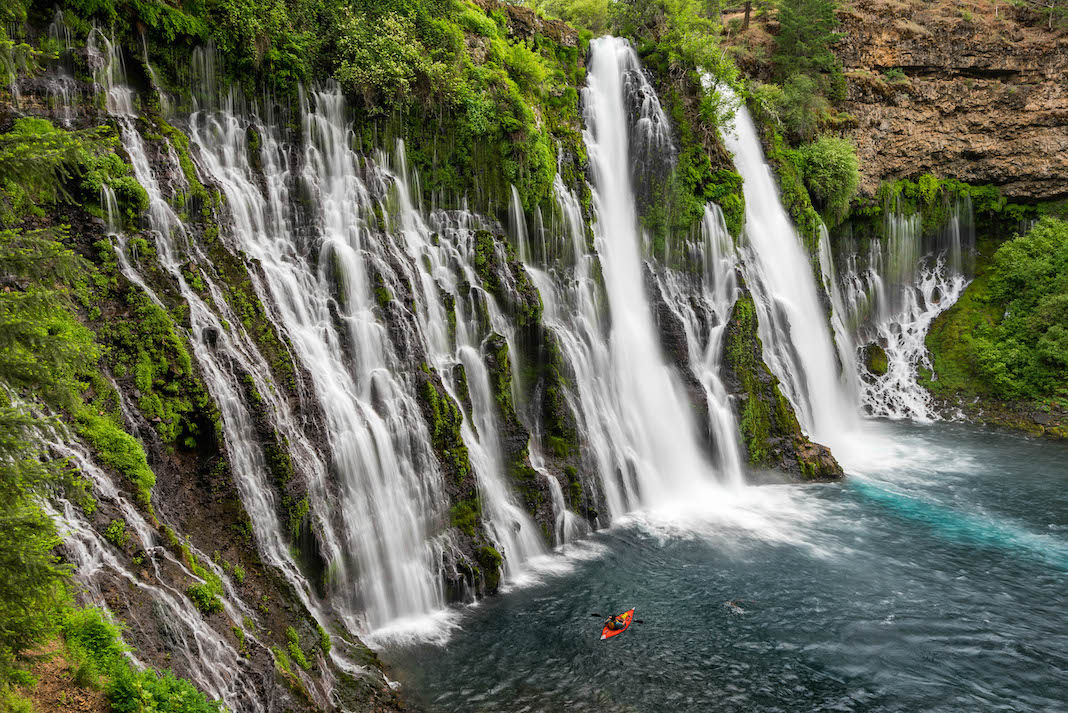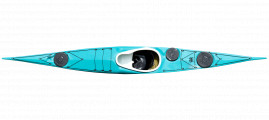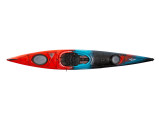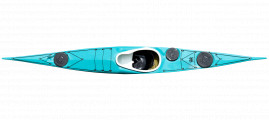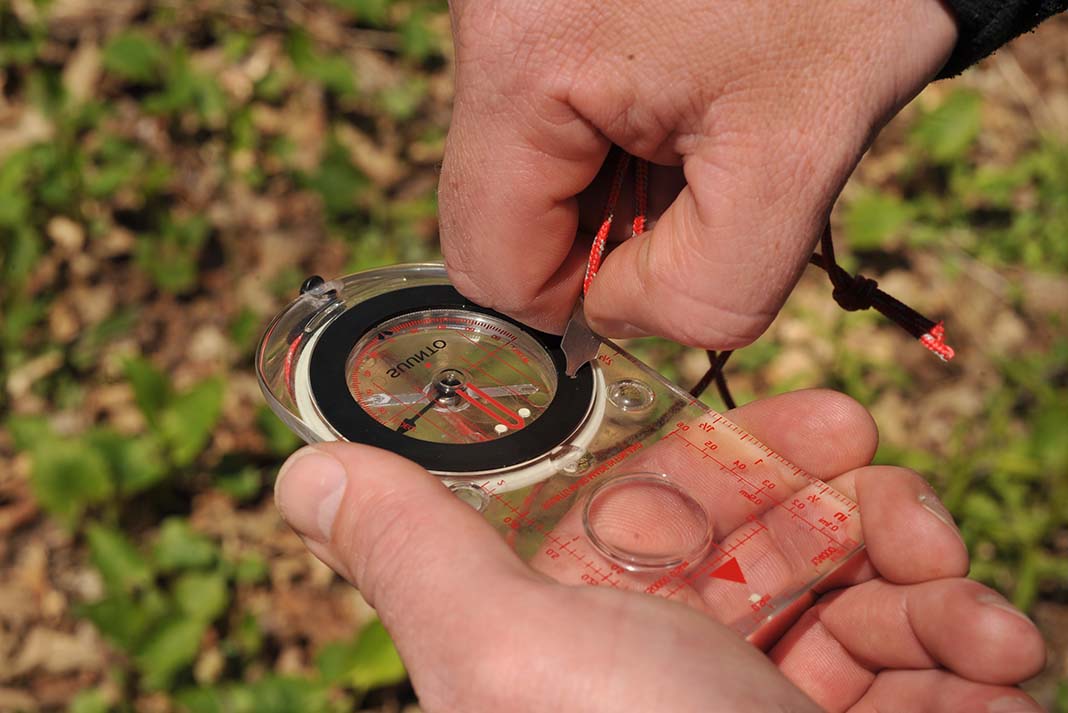The Pelican Mustang 100x is an inexpensive, lightweight, stable, sit-inside fishing kayak. For these reasons, and more, it has become a popular choice for those who paddle and fish in sheltered waterways.
Pelican International was founded in Quebec in 1968. Along with kayaks they produce canoes, standup paddleboards, pedal boats and even small motorboats. Pelican’s kayaks are regularly available at large retailers in North America, including Dick’s Sporting Goods and Canadian Tire.
The 10-foot-long Pelican Mustang 100x falls into the recreational kayak category. The term recreational describes kayaks that favor increased stability at the cost of speed and rough-water performance. This is a topic we will discuss further in the Performance and Demographic portions of this Pelican Mustang 100x review.
The Pelican Mustang 100x is a sit-inside kayak, meaning the paddler slides into the cockpit, with legs enclosed or partially enclosed within the kayak. It’s common to also see kayakers with sit-inside kayaks wearing sprayskirts covering the cockpit of the kayak to keep water from entering.
If you are curious as to whether you are reading a review of the Pelican Mustang 100x kayak or Pelican Mustang 100x EXO fear not. For all intents and purposes, they are the same boat. The EXO designation simply indicates that for that model there is a storage bag included on the rear deck.
On the water with Pelican’s Mustang 100x
Pelican Mustang 100x Specs
Length: 10’ / 3.05 m
Width: 29” / 74 cm
Weight: 39 lbs / 17.7 kg
Capacity: 300 lbs / 136 kg
MSRP: $389 USD
Performance
Users of the Pelican Mustang 100x often note the kayak’s good stability. When discussing stability in a kayak it is important to note the two types: initial stability and secondary stability. Initial refers to how stable the boat feels when you are sitting still on flatwater. Secondary is how stable the boat feels when you tilt the boat or encounter waves.
Good initial stability is often provided by a wide, flat hull on a kayak. This creates a large, fairly even, surface area for the boat to rest on while on calm water.
Secondary stability is often provided by an overall rounded hull shape. This would include soft, curving, edges where the bottom of the hull and sides of the kayak meet, rather than an abrupt edge, like a right angle. This secondary stability allows the waves to pass around the boat with little resistance which prevents capsizing.
So what makes the Pelican Mustang 100x kayak stable? Looking at the boat, it seems fair to say it does a good job of achieving both types of stability, or a reasonable compromise between them. The Mustang 100x has what Pelican refers to as a twin-arched, channeled hull. Another way to refer to this would be a multi-hull or pontoon hull. This shape creates a flat center with two flanking areas to provide good initial stability.
The other design feature which contributes to secondary stability is multi-chined edges. The edges, where the bottom of the boat meets the side, go through staged transitions. This creates more of a curved shape than an abrupt edge. This allows the bottom of the boat to have a flat shape to provide initial stability without a hard right angle edge which would be liable to catch a wave and potentially capsize the kayak. The multi-chined edges assist in allowing waves to roll under the boat with less resistance.
The Pelican Mustang 100x also boasts decent tracking ability thanks to the skeg that projects along the keel at the stern of the Mustang 100x. As well as by the twin-arch hull mentioned earlier. The twin-arch hull provides two channels for water to travel along, rather than an even flat bottom. The combination of these channels and the skeg help the Mustang 100x travel in a straight line, instead of having the bow slip from side to side with each paddle stroke.
Market and demographics
The Pelican Mustang 100x is classified as a recreational fishing kayak. What exactly is a recreational kayak? Aren’t we all recreating no matter the kayak we are in? Good question.
“Recreational” describes a kayak designed for use on calmer waterways, such as sheltered lakes, bays or slow-moving rivers. Recreational kayaks generally favor increased stability at the cost of speed. This means the width of the kayak in ratio to the length is often wider than you would find on a high-performance kayak.
Recreational kayaks can be a sit-inside style like the Mustang 100x, or a sit-on-top kayak where you are not enclosed at all. Recreational kayaks often feature a lower price and use a less advanced type of material in production.
For these reasons, recreational kayaks such as the Pelican Mustang 100x are often intended for novice paddlers, either beginners or more experienced paddlers who know that they like to keep to protected waters where they won’t be challenged by the conditions, as well as paddlers or anglers who are not looking to cover long distances.
Know The Local Hazards
- Check navigation charts before you launch.
- Check with those who have local knowledge of man-made and natural hazards, e.g. low-head dams; sweepers, strainers and undercuts; tides and currents; and rocks and shoals.
About the Mustang 100x
Material and construction
The Pelican Mustang 100x kayak is constructed of Pelican’s Ram-X plastic. Ram-X is a high molecular weight polyethylene (HMWPE) that can withstand impact and return to shape after being flexed. The Mustang is produced using a thermoforming process, which means plastic sheets are heated to a pliable temperature then placed over a mold to shape. This lightweight construction allows the Mustang 100x to weigh just 39 pounds.
Pelican Mustang 100x kayak accessories and outfitting
The Pelican Mustang 100x has a number of useful outfitting features.
The bow grab handle comes in handy when pulling the Mustang 100x up a beach or into the bed of a pickup truck.
There is a storage hatch near the bow of the Mustang 100x. The hatch is covered by a deck plate which is held in place only by bungee cords. A common user gripe is that this seal is not dry at all, and the hatch easily takes on water.
As a sit-inside kayak, the Mustang 100x has a large cockpit that measures 47 inches long and 25 inches wide. A large cockpit makes the kayak easier to enter and exit, but also allows for more water to enter and makes it harder to find a spray skirt to close the cockpit if desired.
Within the cockpit of the Mustang 100x are the foot rests and seat. The foot rests resemble a set of steps, with incremental plastic ledges for different foot positions. The seat is also molded-in, with a fabric cover for padding.
Behind the seat, within the cockpit, is the backrest. The backrest is also fabric, and features adjustable webbing straps. These straps let paddlers tighten the backrest to provide support for an upright, active posture. Or you can loosen the backrest to kick back and relax.
There are two molded-in fishing rod holders on the deck directly behind the seat of the Mustang 100x. These rod holders provide accessible storage for two different tackle setups, and are ready to go when you arrive at the action.
Also, behind the cockpit on the Mustang 100x is a recessed tankwell for storage. This tankwell can accommodate Pelican’s EXO removable drybag. Much like the bow hatch, users often complain this storage bag is not very dry at all. This is something to keep in mind for users of the Mustang 100x if they have personal gear they would like to keep dry.
One of the items I often carry for paddling trips is a small dry bag. This is to be sure my belongings and lunch stay dry. Good options are the Pelican Exodry 10-liter dry bag, or an NRS Tuff Sack. You can secure your dry bag in the rear tankwell or, if there is room, push it inside the bow hatch of the Mustang 100x.
At the stern you will find the Pelican Mustang 100x drain plug. When you are finished paddling, pulling on shore for a break, or recovering from capsizing, the drain plug can be unscrewed to empty water which has entered the Mustang 100x.
One of the major outfitting issues to be aware of with the Pelican Mustang 100x are the lack of bulkheads. What are bulkheads? Bulkheads are pillars segmenting the inside of a kayak hull into separate chambers. They are often made of foam, and glued into place with a waterproof sealant. These chambers create separate air pockets to give the kayak buoyancy when capsized. This makes a self-rescue or assisted rescue easier, should you require one to get back in the kayak or to shore.
Wear A Life Jacket
- Everyone, even strong swimmers, needs to wear a life jacket at all times when on the water. It is extremely difficult to put a life jacket on once you fall into the water. Even a light wind can blow any paddlecraft away from you, faster than you can swim.
- Always wear a USCG-approved Level 70 or Type III life jacket designed for paddling.
When buying a kayak without bulkheads, it would be a sound investment to also purchase float bags. Float bags can act as a suitable stand-in for the safety value of bulkheads. They are inflated within the kayak to provide buoyancy. In doing so they take up volume and reduce how much water can enter the kayak in the event of a capsize. The Harmony float bag for small recreational kayaks would make a good fit in the Pelican Mustang 100x. You can inflate one in both the bow and stern of the kayak.
Another way to keep water from entering the Mustang 100x would be a sprayskirt. Sprayskirts are commonly made of neoprene or nylon. They are worn above your waist, and wrapped over the edges of the cockpit to provide a cover. Nylon would be suitable for a Pelican Mustang 100x spray skirt. Be sure any skirt will fit the cockpit size of 47 inches long and 25 inches wide. Don’t use a sprayskirt unless you have practiced pulling the skirt and exiting the kayak when capsized.
Another accessory available to keep water from entering the kayak during storage is a cockpit cover for the Pelican Mustang 100x. Pelican sells what they refer to as a cockpit drape for their recreational kayaks.
Pelican Mustang 100x mods
For kayak anglers, modifications are a given. They are part of the fun. There are a number of Pelican Mustang 100x upgrades you can make at home.
One of the first modifications you can make to the Mustang 100x that is especially helpful to kayak anglers is a paddle holder. Pelican sells a mountable paddle clip to be bolted to the kayak. When deciding where to place your paddle holder be sure it will not interfere with your paddle strokes.
Another modification offered directly from Pelican is a swiveling rod holder. A swiveling rod holder can be mounted to the deck of the Mustang 100x in front of the cockpit. This provides immediate access to a rod set up while paddling.
An accessory track is another useful upgrade for your Mustang 100x. This allows you to mount items like cameras or fishfinders. The YakAttack GearTrac is a popular accessory track option to install on the deck.
A Pelican Mustang 100x kayak seat upgrade is a topic of interest for many. As a sit-inside kayak, options for completely overhauling the seating system of the Mustang 100x are limited. One option is to purchase a cushion such as the YakGear Sand Dollar Seat Cushion, for an immediate comfort upgrade. Another option would be to purchase outfitting foam from a supplier such as Northwest River Supply and shape a seat of your own in place of the installed seat from Pelican.
Warranty
Pelican offers a lifetime limited warranty against defects in materials and workmanship on the hull and deck on all kayaks.
Parts and accessories are given a warranty against defects and workmanship for one year from the date of purchase.
How it compares
There are a number of sit-inside kayaks similar to the Mustang 100x. With this in mind there are a few popular standouts worth comparing.
-
Pelican Mustang 100x vs 120x
The Pelican Mustang 100x can be compared with Pelican’s larger counterpart the Mustang 120x. These two kayaks have all of the same features and provide a similar design and feel. The main difference will be found with length and weight capacity.
The Mustang 100x is 10 feet long, while the Mustang 120x is 12 feet. This makes the 120x faster and also contributes to a higher weight capacity of 375 pounds (compared to 300 pounds for the 100x).
-
Pelican Mustang 100x vs Trailblazer
The Trailblazer 100 NXT is another kayak from Pelican comparable with the Mustang 100x. Like the Mustang 100x kayak, the Trailblazer is a sit-inside design.
Both kayaks are 10 feet in length, and have the same twin-arch hull design. At 28 inches, the Trailblazer is one inch narrower.
Kayak anglers take note, the Trailblazer lacks rod holders, while the Pelican Mustang 100x EXO has two located behind the cockpit. If kayak fishing from a sit-inside kayak is your goal, the Mustang 100x will be much better suited.
Dress For Immersion, Not Air Temperature
- Your body loses heat much faster when immersed in cold water than it does when dry.
- Avoid cotton clothing like t-shirts and jeans; they retain water and accelerate cooling when wet. Synthetic fabrics, or wool, are generally a better choice. If the water is very cold (60° fahrenheit or less), you should wear a wetsuit or drysuit.
-
Pelican Mustang 100x vs Perception Swifty
The Pelican Mustang 100x and Perception Swifty 9.5 are similar fishing kayak designs offered by separate manufacturers. Both are in the class of sit-inside, recreational fishing kayaks. The Swifty is similar in length at 9.5 feet, just six inches shorter than the Mustang 100x. They both feature built-in rod holders. The Mustang 100x has the bow storage hatch, and stern tankwell. The Swifty has a stern storage hatch, with a tight-fitting plate which does a better job of staying dry. The construction of the Swifty is a one-piece, rotomolded polyethylene, compared to the two-piece thermoformed sheets of the Pelican Mustand 100x EXO kayak.
Both kayaks are sold exclusively at Dick’s Sporting Goods, so you can take a look at the two boats side by side and see which might work for you.
-
Pelican Mustang 100x vs Sun Dolphin Aruba 10
The Sun Dolphin Aruba 10 is a widely popular sit-inside kayak within the same price range as the Pelican Mustang 100x EXO kayak. The Aruba 10 has a similar overall design to the Mustang 100x. However, the Aruba 10 has a lower weight capacity at 250 pounds compared to 300 pounds for the Mustang 100x.
While the Aruba 10 is a similar design as the Mustang 100x from a recreational paddling standpoint, it lacks installed rod holders. The Mustang 100x has two. This makes the Mustang 100x a better off-the-rack choice for kayak fishing.
Another factor is availability. The Mustang 100x kayak is exclusively sold through Dick’s Sporting Goods and Field & Stream. While the Aruba 10 can be found at a number of large retailers including Canadian Tire and Walmart.
-
Pelican Argo 100x vs Mustang
The Pelican Argo 100x is another sit-inside recreational kayak offering comparable to the Pelican Mustang 100x kayak.
A glance will reveal that the Pelican Argo 100x does not have rod holders. This means if you are a kayak angler you will not have the ability to store rods without modifications.
The Argo 100x is close to par for specifications with the Mustang 100x, and is also built on Pelican’s twin-arched hull design. The Argo 100x has two noticeable differences standing out in design and outfitting.
In design, the rear storage tankwell of the Argo 100x has scupper holes, whereas the Mustang 100x does not. The scupper holes at the tankwell in the Argo allow water splashing inside this storage space to drain out the bottom.
As for the outfitting, The Mustang 100x features an installed foot rest with designated foot positions. The Argo 100x has a sliding, adjustable foot brace. There are pros and cons here. Sliding foot braces allow for some fine tuning, but are also difficult to reach and adjust on the water. For foot rests, you have fewer options for fit, but can easily slide your foot from one position to the next even while paddling.
Where to buy the Pelican Mustang 100x
The Pelican Mustang 100x kayak is currently sold exclusively at Dick’s Sporting Goods and Field & Stream. This means while it is a popular design, you will not find the Pelican Mustang 100x kayak at Walmart, Canadian Tire or other large retailers.
Mustang 100x pros and cons
Pros
- Lightweight
- Low cost
- Good stability for its class
- Large cockpit for easy entry
- Installed rod holders
- Aft tankwell
- Flexible plastic
Cons
- Lack of bulkheads
- Resilient plastic
- Wet storage hatch
- Limited deck storage
Related articles
Pelican kayak reviews
Budget fishing kayak reviews
Sit-on-top fishing kayak reviews
SEE ALL KAYAK REVIEWS
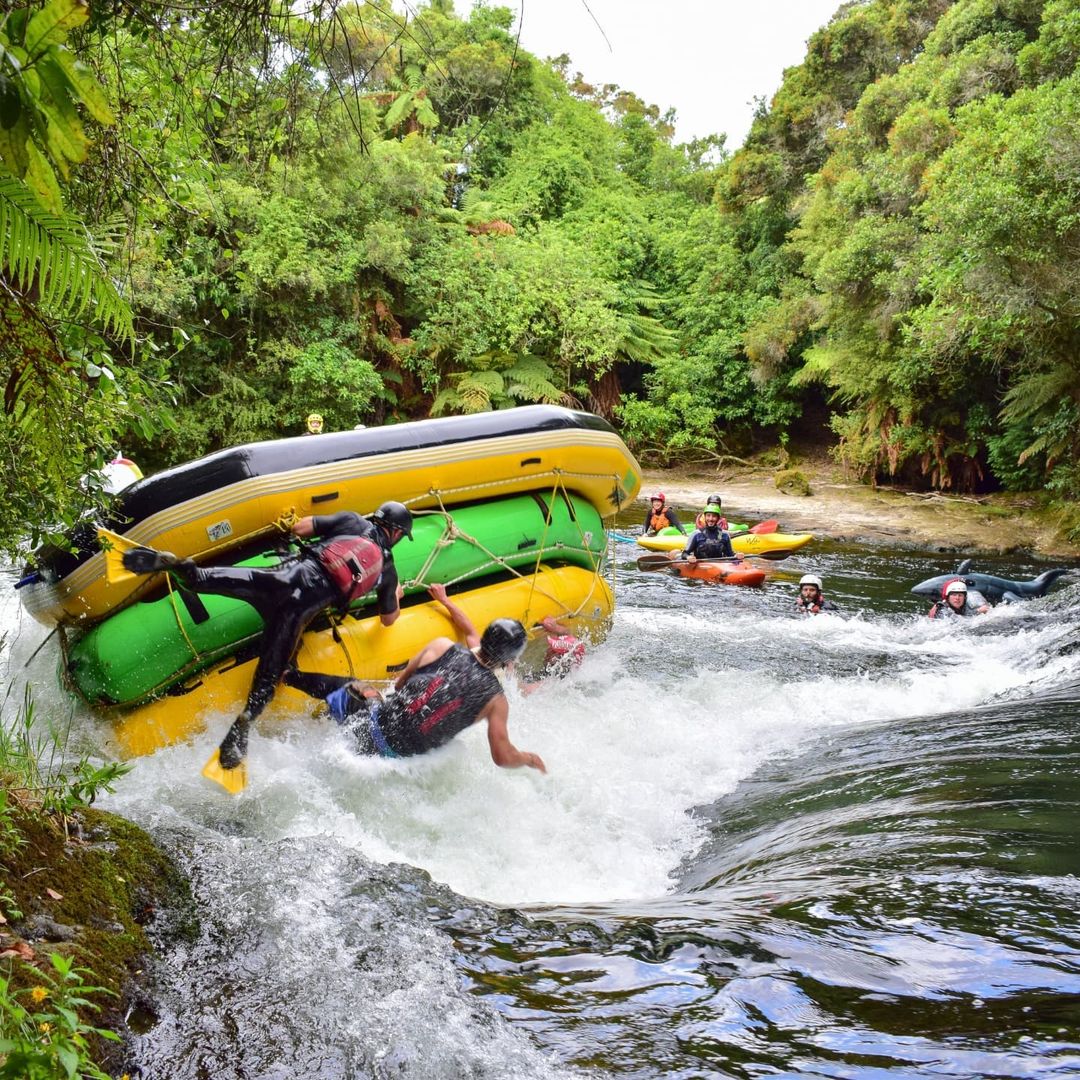



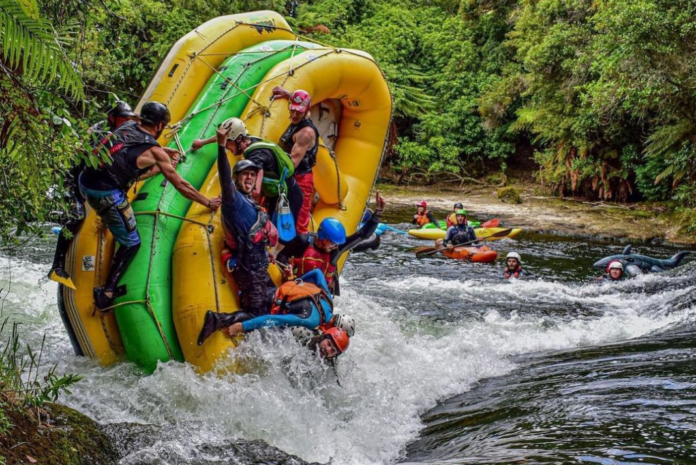
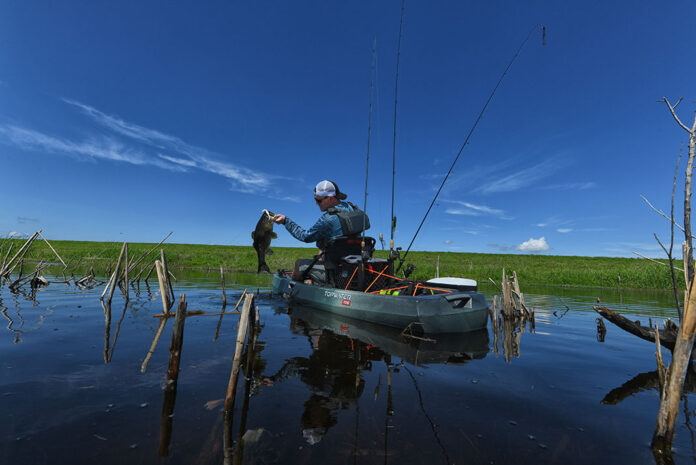
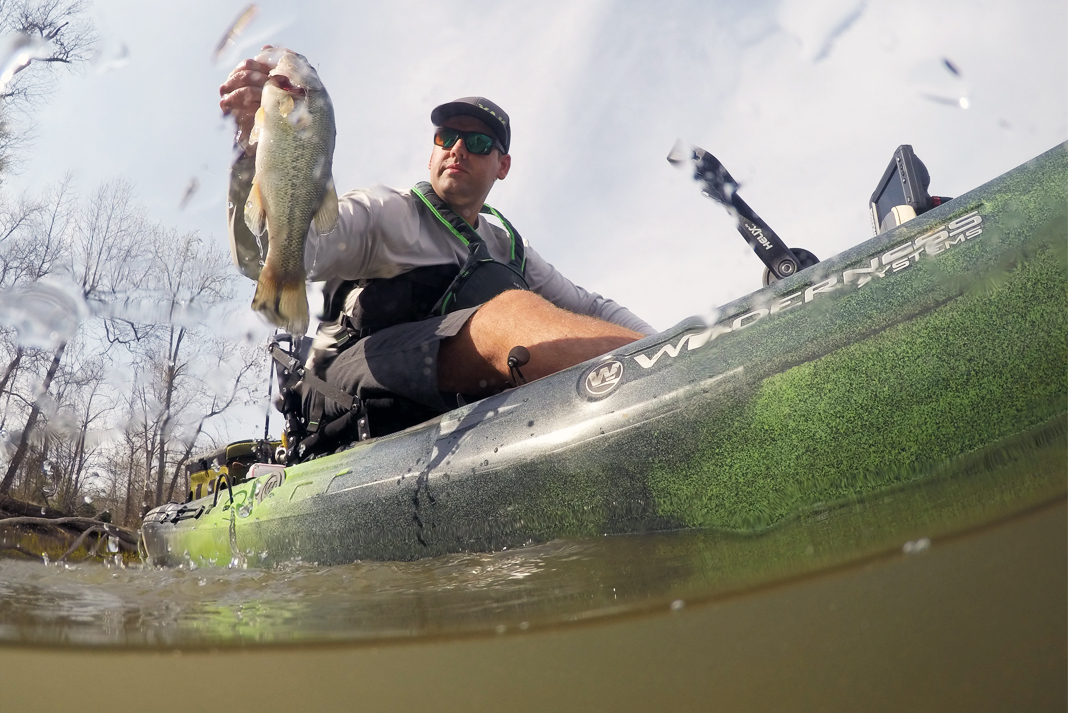
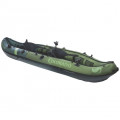

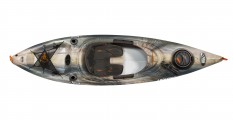

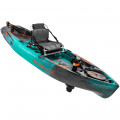


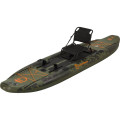
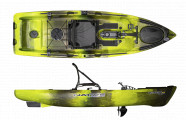
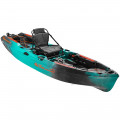
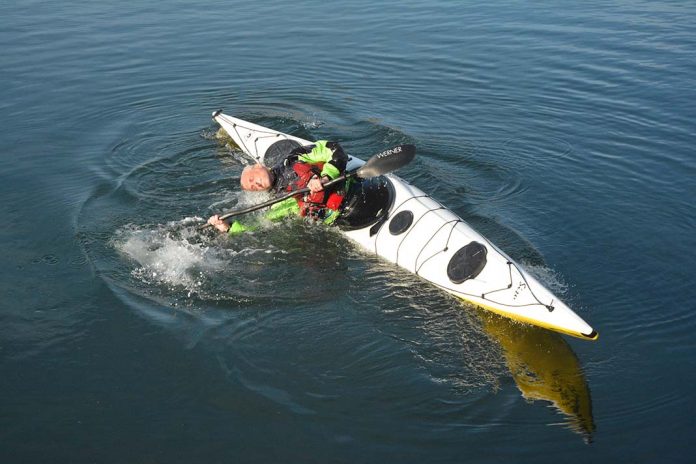
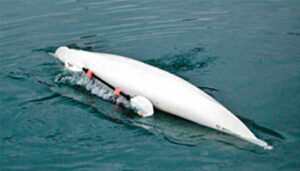
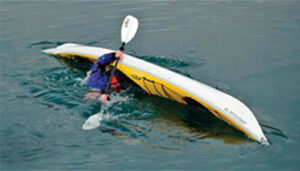
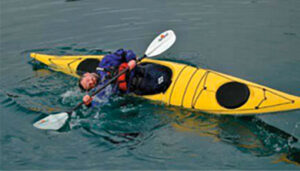
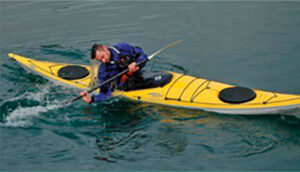
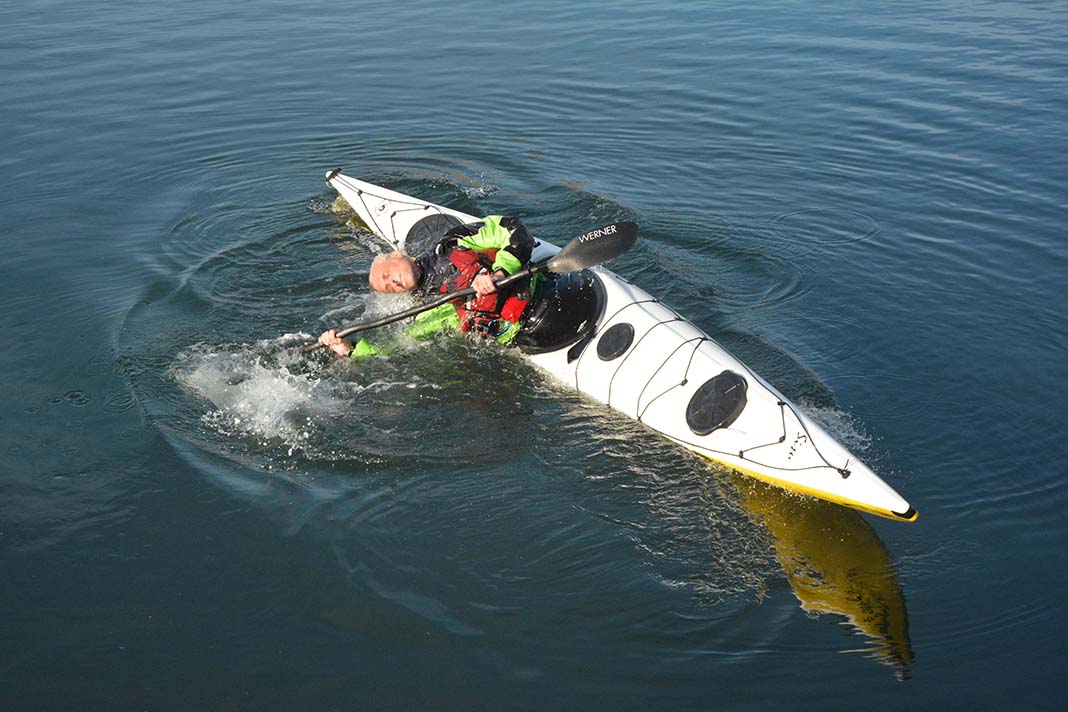
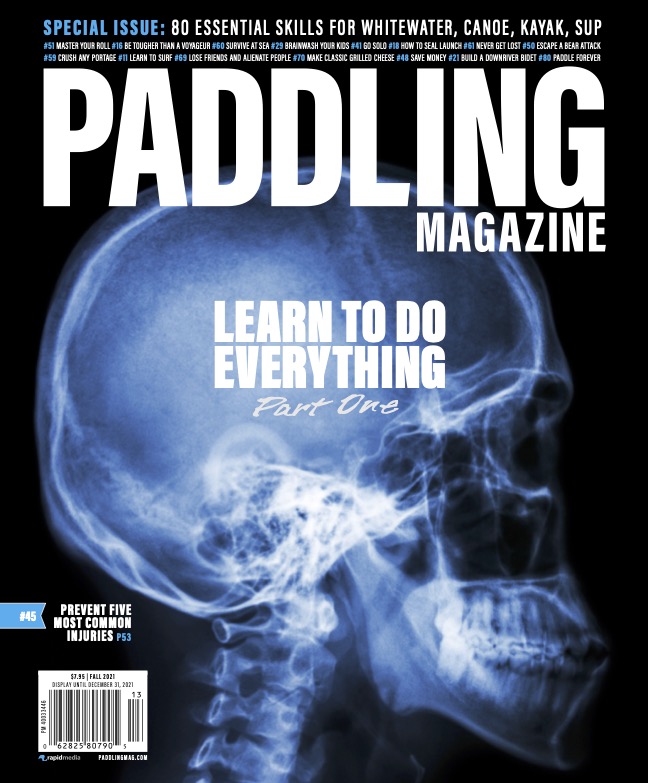

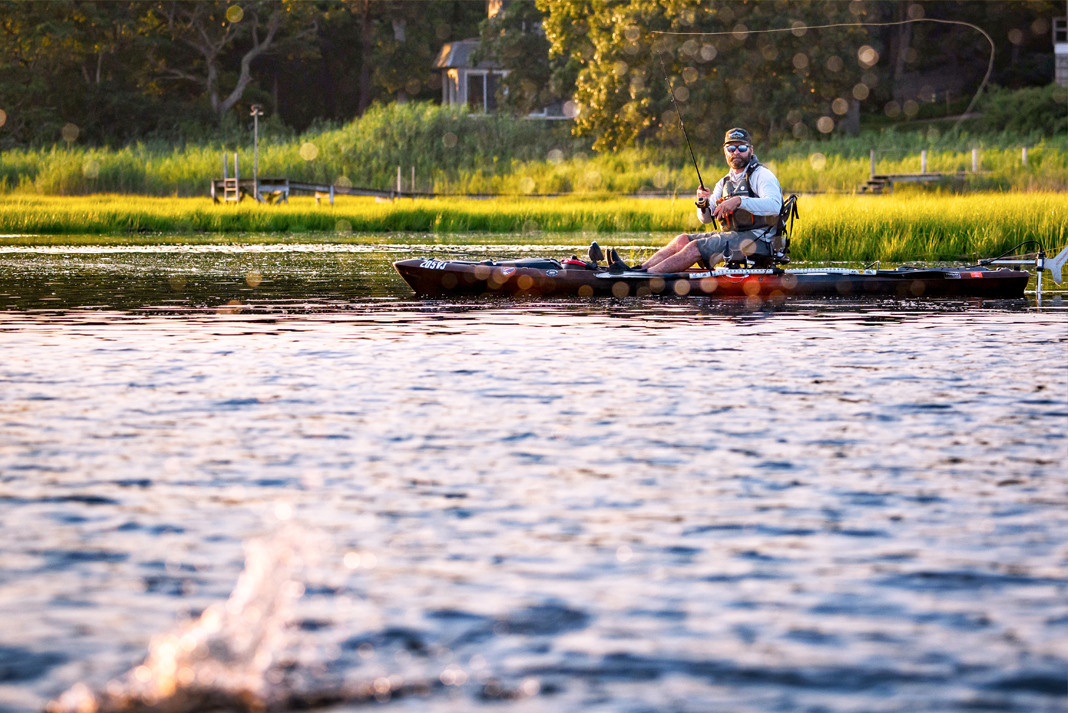



-first_product_boats.jpg)
-first_product_boats.jpg)
-first_product_boats.jpg)
-first_product_boats.jpg)
